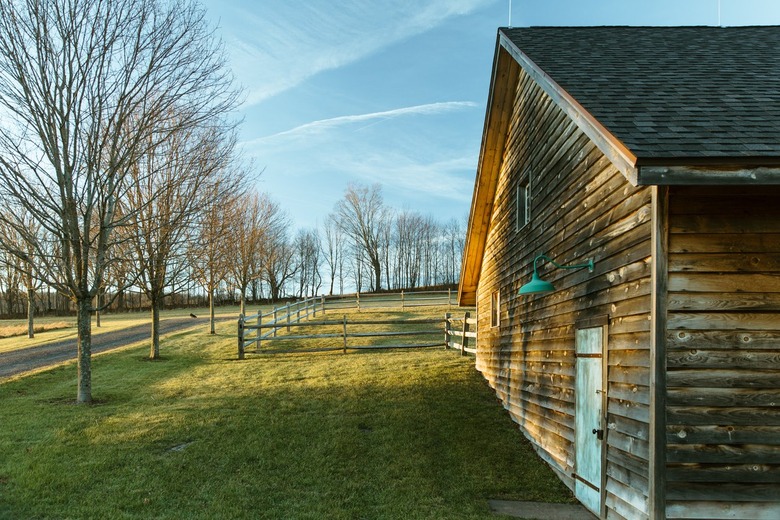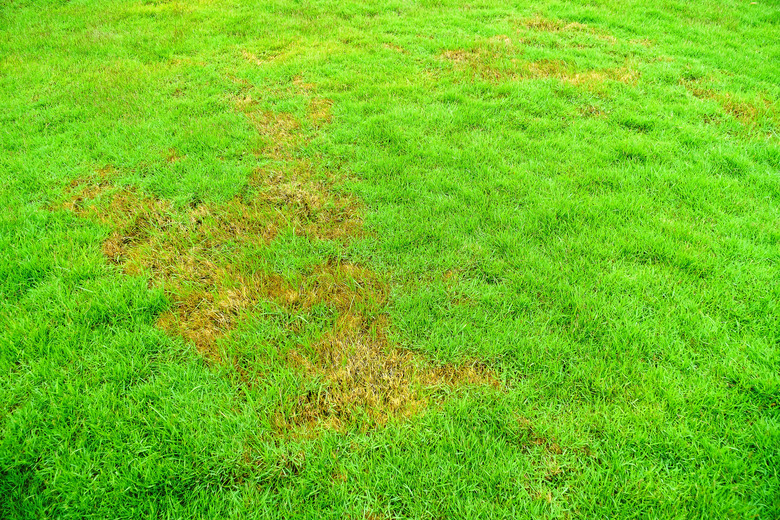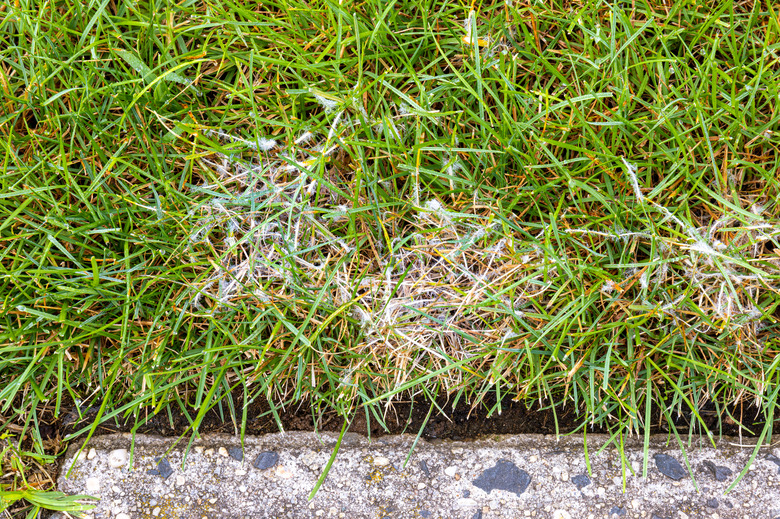5 Lawn Diseases: How To Identify And Correct Them
We may receive a commission on purchases made from links.
Even if you're dedicated to lawn care, lawn diseases can still happen. Some are easy to treat, and others are best prevented. The specific diseases that affect your lawn will vary depending on where you live, what kind of grass you have and the weather conditions in your area.
As is often true, an ounce of prevention is worth a pound of cure when it comes to lawn diseases. Some diseases are preventable but must be allowed to run their course once acquired, while others require intervention. To prevent common lawn diseases whenever possible, keep your mower blades sharp, use minimal amounts of nitrogen fertilizer and solve any irrigation issues. Aerate and dethatch your lawn at least once a year as well.
1. Brown Patch Lawn Disease
1. Brown Patch Lawn Disease
Sometimes called Rhizoctonia blight, brown patch disease is the result of a fungus. The disease first infects a few individual grass blades and then spreads to the crown of the plant. When it does, it produces a circular patch of brown grass in the lawn. These patches can be as small as a few inches in diameter or can expand to areas more than 10 feet wide. As the patches expand outward, the grass in the middle of the patch may start to recover. When it does, brown patch looks like rings of brown grass around patches of green grass.
Brown patch is most prevalent in cool-season turfgrasses such as perennial ryegrass, tall fescue, and Kentucky bluegrass. The fungus that causes this disease thrives when the temperatures are below 80 degrees Fahrenheit during the day. Brown patch also likes high humidity levels.
The good news is that brown patch probably won't kill an established lawn. Eventually, the weather conditions will change, and the brown patch fungus will go away on its own. The bad news? Once your lawn has brown patch, you can't do much more than wait for that weather change. Fungicide treatments applied preemptively to the lawn can prevent brown patch. Once you have it, however, even professional lawn care services can't do much about it.
2. Large Patch Disease
2. Large Patch Disease
Caused by a fungus in the same family as the one that causes brown patch, large patch disease also creates brown spots in the lawn. These tend to be larger than those associated with brown patch, however, and often have a dark orange rim around them. Large patch disease can cause brown areas more than 25 feet wide in your lawn.
Large patch disease affects warm-season turfgrasses such as St. Augustine grass, zoysia, Bermudagrass and centipede grass. It likes temperatures above 80 degrees during the day and above 55 degrees at night and is most active in spring and fall when temperatures are cooler.
This disease won't go away on its own. To stop it, make sure you aren't overwatering or overfertilizing your lawn. Wait until the temperature stays above 75 degrees to apply any nitrogen fertilizers. Set your mower deck as high as you can since large patch disease likes short grass.
You'll also want to apply a fungicide treatment to your lawn as soon as you see signs of large patch disease. If you don't, the disease will keep coming back, causing areas of brown grass in the same places over and over again.
3. Red Thread Lawn Care
3. Red Thread Lawn Care
Because it likes wet but cool weather, red thread is a problem most often found in the middle to northern part of the United States and is common in the Pacific Northwest. Affecting Kentucky bluegrass, ryegrass and fescues, red thread produces a reddish growth on leaf blades that often binds several blades together. Red thread is easiest to see when your lawn is wet, and it will eventually cause brown spots.
To alleviate red thread, bag your grass clippings and dethatch your lawn. When mowing, go over infected parts of your lawn last to avoid spreading the disease and rinse your mower blade after each use. Usually, a single application of quick-release nitrogen fertilizer will cure red thread. If it doesn't, apply a fungicide that contains azoxystrobin or propiconazole. Red thread can survive in your lawn for many years if left untreated, so be sure to take action if you see this lawn disease in your yard.
4. Rust Diseases and Care
4. Rust Diseases and Care
Rust diseases affect many different grass varieties, causing light-green or yellow patches in the yard. Although the lawn may look yellow or brownish, closer examination of individual grass blades will reveal orange-yellow spots.
In areas where cool-season grasses grow, rust typically occurs in the summer or early fall and is predominantly caused by drought or a lack of fertilization. Warm-season grasses can experience rust at any time from May through October and tend to suffer from rust when they lack nitrogen. Irrigate your grass deeply if the season has been a dry one and get your lawn on a regular fertilization schedule. If you're establishing a new lawn, choose rust-resistant grass varieties.
5. Dollar Spot Disease
5. Dollar Spot Disease
Like most other lawn diseases, dollar spot causes brown spots to appear in your lawn. Often the size of silver dollars on golf courses, the brown patches caused by dollar spot easily reach 2 to 6 inches across in home lawns, and multiple spots may merge into each other. To distinguish dollar spot from other diseases, examine individual grass blades and look for hourglass-shaped lesions.
Appearing from March through November in Kentucky bluegrass, rye, zoysia, centipede and Bermuda grasses, dollar spot can thrive in both overly dry and saturated lawns. Make sure you water your lawn deeply rather than frequently and always when the grass will have plenty of time to dry before nightfall.
Apply a water-soluble nitrogen fertilizer like ammonium sulfate as soon as you notice symptoms of dollar spot and then get on a regular lawn fertilization schedule, based on soil-test recommendations. Most homeowners can solve dollar spot issues without fungicide, but you can treat with Mancozeb or propiconazole if your problem is severe. Bag your grass clippings until you resolve your dollar spot issue.


